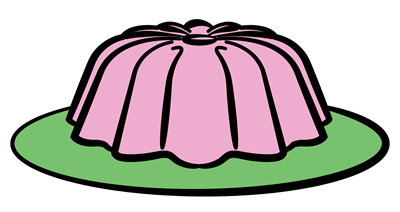This week we are going to cover a very basic recipe used in mid-century cooking: White Sauce.
Come to think of it, this is the starting point for a lot of good food. Like mac and cheese, one of the most delicious dishes of all time.
Many, many, many mid-century recipes start out by saying, “Make a white sauce.” Usually, there are no extra directions beyond this. Sometimes, if you’re lucky, they will specify if you need a thick sauce or a thin sauce, but if you have no idea what that means than it really doesn’t help you very much. Early on in my cooking adventures, I came across this handy graph and recipe, which are from the Guide to Better Cooking, published by Columbia Gas System, a purveyor of natural gas for home use (think gas stoves).

From The Guide To Better Cooking, Columbia Gas System
Tested Recipe!
[cooked-sharing]
This is pretty self-explanatory (Except for the thermostatically controlled burner part, which you can pretty much ignore. They mean low heat.), and the ratios seem pretty cut and dried. The only change I’ve really made to this recipe is to use a whisk instead of a wooden spoon.
However, this is really just a jumping off point for your recipes. As you become more adept at making white sauces, you will figure out a few tweaks here and there that will improve your white sauce or tailor it to the dish you are making.
For example, if I am going to make a recipe of mac and cheese, I’ll made two total cups of medium white sauce for about a pound of dried pasta. If I’m going to bake the mac and cheese before serving, I will add an extra 1/2 to 1 tablespoon of butter, which seems to make the sauce less grainy when it comes out of the oven.
Once you get the hang of this very basic recipe, you will be able to crank out all kinds of delicious food. Sausage gravy, creamed veggies, tuna noodle casserole, cream soups, scalloped potatoes, creamed chipped beef, and, of course, mac and cheese. Just to name a few. I also will occasionally add this as a layer in lasagna, or use it to make a quick pasta sauce with mushroom, or pesto, or fresh tomatoes and garlic, or all of the above. Or pretty much anything you have hanging around in your pantry.
Oh wait! I almost forgot to show you the Tom taste test!
He likes mac and cheese!
Does anyone else out there have some white sauce tips that they’d like to share? Feel free to leave them in the comments section!










The classic white sauce–so crucial! I find it helpful to incorporate the milk very slowly and whisking the lumps out before adding any additional milk.
I usually add a sprinkle of nutmeg.
Brown the butter a bit before adding the flour and make sure to cook the flour a bit before you add the milk both of these things will make a richer more flavorful sauce and if you are dairy free use Mocha Mix rather than Coconut or Almond or what have you. Those milks have a tendency to really sweeten up when cooked but Mocha mix will still be savory. I also add a bit of garlic because I like garlic in everything. And lastly, get your kids involved. This is one of the 1st things I made in the kitchen mostly because my mom didn’t want to do the stir contently bit so I did that part . She served cheese sauce over broccoli and cauliflower as a way to introduce those veggies to us. I think we were the only kids on the block that got excited about eating broccoli not only because we knew we were getting cheese sauce but because I would have fun helping her in the kitchen. White sauce is a miracle food if ever there was one.
I actually make mine now in the microwave. How did I ever live without my microwave.
If memory serves, even Lewis Carroll brings up white sauce in his very flawed but interesting Sylvie and Bruno novels, with the narrator talking to Lady Muriel about ghosts: she says that it’s unsightly of them to welter in gore, and as they’re represented as pale or white they should welter in white sauce. The narrator thinks she’s reading a ghost-story on their railway journey but she hands him her book: it’s a cookbook and she’s been reading about white sauce. Sorry, but this has popped into my head often while cooking.
ive had mixed success with white sauce, sometimes it just turns out so pasty and undercooked tasting.
I loved Bruno and Sylvie.
I’ve always used canned milk for white sauce when I have it. This makes a lovely base for gravy, especially if you use grease from cooking the sausage. I make a white sauce for ham and cheese casserole this way. Such a lovely casserole, and always better the second day. If you use the canned milk, use one or two cans of water to the milk to cut it.
Hot roux + COLD milk = no lumps! @Lassie it’s important to continue to cook/stir the white sauce over low heat for at least 10 minutes after it comes together. Not only does this give time for the flour to fully hydrate (no more graininess/pastiness) but it also loses that floury taste.
Before cheese sauce was THE thing to get kids to choke down their veggies, my mom was dousing ours in white sauce. She added a pinch of sugar to offset a few of the stronger veggies like broccoli and Brussels sprouts. Great in any recipe calling for cream of whatever soup.
I’ve been experimenting quite a bit with it, and I recommend adding a hand full of grated parmesan cheese (the real kind, not the packaged stuff) some chicken broth, white pepper, a bit of cream, salt, and some white whine.